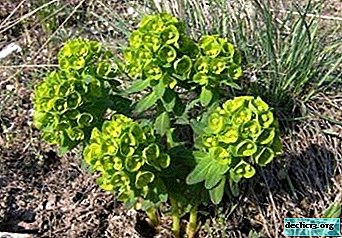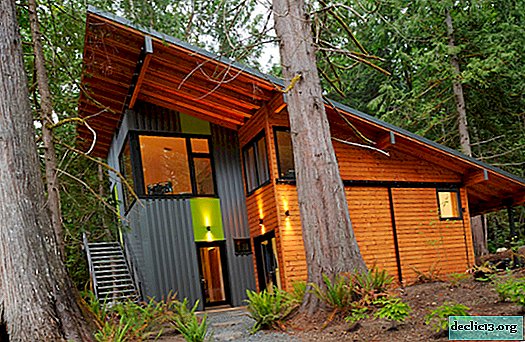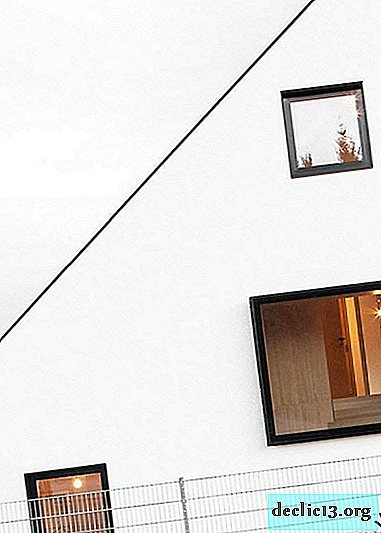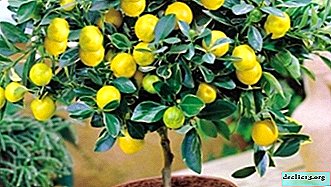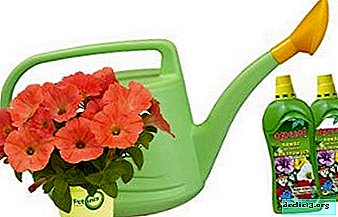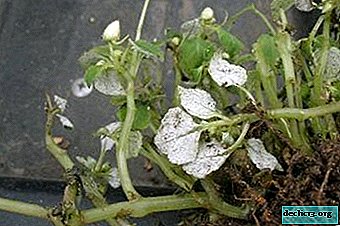All about flowering peperomia: features of the process, photos of blossoming plants

A flower called peperomia - Peperomia (dwarf pepper) - most often a small herbaceous plant with thick leaves of different sizes and shapes, colors and structures. Belongs to the family Piperaceae (Peppers). Homeland is considered to be Tropical America and Asia. The name translated from Greek means: "peperi" - "pepper" and "omos" - "the same." In nature, it can grow on bushes and tree bark, rotting parts of plants, in forests on soils rich in peat, and less often on rocky terrain. The people meet such a name as "percussion-like" or "plant with a rat tail."
Peperomia is a perennial succulent-epiphyte native to the jungle, which has a great variety in color and shape of leaves.
Therefore, it is valued as a decorative leaf plant. Peperomia bloom is especially surprising: its flowers are tiny ears or spikelets.
What types of plants are blooming?
In nature, there are more than 1200 species of this plant., most grow in the tropics of South America, 17 species have been discovered by biologists in Africa. Only a small part of decorative value is cultivated in home floriculture.
The variety of shapes and colors of the leaves of this plant is amazing: they can be golden, bluish, gray, olive, brown, silver, burgundy, red, dark emerald, tricolor, smooth and shiny or wrinkled, round and lanceolate, narrow and heart-shaped , from 2 to 20 cm in size.
Different types of flower can be extremely dissimilar to each other. There are ampelous, erect and bush species.
Do they bloom or not? Mostly upright and bush bloom. Peperomia in bloom is an unusual occurrence. Her small dioecious (bisexual) flowers are collected in thin tail-shaped inflorescences-ears and small panicles. The color of the spikelets is usually inferior to the color of the leaves and makes the spikelets inconspicuous.The most popular types:
- Velvety: large plant up to 40 cm high with erect purple stems, alternately sitting pointed leaves with bright veins. It blooms with spike-shaped inflorescences about 7 cm long, located in the axils of the leaves.
- Silver: a short bush with silver-green leaves in a dark green longitudinal strip during flowering is covered with greenish or yellowish ears 4-6 cm long.
- Clubly: plant with hard large green-yellow leaves with pink fringes up to 15 cm long and long pale green spikelets of inflorescences.
- Spotted: a plant with thick shoots, which are upright and semi-lying, with bright green leaves and brown or greenish inflorescences 40-50 cm long.
- Pleasant: bush 25-30 cm tall with a compact dense crown, bright green leaves, purple stems and tiny, up to 1.5 cm, green inflorescences.
- Wrinkled: A favorite type of gardeners is a plant with perforated leaves, which can be either dark green or cherry, and inflorescences of various shapes: from spikelets to scallops, the color of which varies from white to brownish-pink.
Photo
You will see a photo of the plant in question blooming:





How often does flowering occur?
Most peperomia species bloom once a year.but in some species, flowers may appear every season. This plant does not have a pronounced dormant period in most cases. The only exceptions are species that have a tuberous root system: their aerial part dies off after flowering.
When does budding start?
The flowering period of this plant is the end of spring and the beginning of summer. Inflorescences are odorless and are considered less valuable compared to luxurious leaves. It is believed that flowering takes away the strength of the flower, and often the peduncles are removed at the stage of formation in order to maintain a rich crown.
How long does it last?
Peperomia flowering usually lasts all summer, and by autumn, fruits are formed at the site of inflorescences: small berries, slightly dry in texture. They can be sprouted, but for inexperienced gardeners this is too difficult a task.
Description of blooming buds
Peperomia flowers are in the form of spikelets or tails., length from 1.5 to 12 cm, color from light green to brown. Some varieties of this flower have white or cream-shaped comb-shaped inflorescences of a peculiar shape.
Reference: flowers are formed only in a short day (less than 12 hours).How to extend the process?
Flowering is usually an indicator of the proper development and growth of a plant. In some types of plants, flowering can be extended by carefully observing the rules for caring for a green friend:
 Proper lighting - diffused light or partial shade. The first is relevant for species with brightly colored leaves, the second is for species in which the leaves are green.
Proper lighting - diffused light or partial shade. The first is relevant for species with brightly colored leaves, the second is for species in which the leaves are green.- Watering - only with soft defended water, moderate, additionally - spraying of the flower.
- Air temperature - 18-22aboutC, soil - not lower than 17aboutC. Avoid drafts.
- Top dressing - For enhanced flowering, phosphorus fertilizers are recommended.
- Priming - light, well-drained, soil pH from 5.5 to 6.5.
To avoid problems and grow a healthy and beautiful plant, you need to know about the causes of pests in your pets and diseases that can affect them. We talked about ways to eliminate them in another article.
What to do then?
Withered flower stalks are removed, and the berries formed in their place can be used to propagate the plant.
How to make giving spikelets at home?
If the flower actively builds green mass, but does not throw out thin spikelets - obviously, one or more conditions of its maintenance are not observed. You need to be more careful about caring for the plant, and the result will not be long in coming.
The discreet flowering of peperomia adds to its charm and emphasizes the uniqueness of the plant. Compliance with the conditions of its maintenance provides and abundant flowering.

 Proper lighting - diffused light or partial shade. The first is relevant for species with brightly colored leaves, the second is for species in which the leaves are green.
Proper lighting - diffused light or partial shade. The first is relevant for species with brightly colored leaves, the second is for species in which the leaves are green.